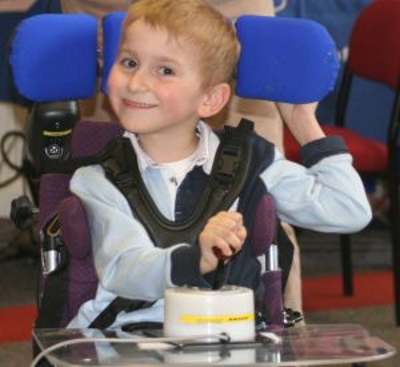Assistive Technology has opened up a world of opportunities for people with physical support needs.

For example:
- Malcolm drives from class to class in his local mainstream school with his powered wheelchair. In class, Malcolm accesses his laptop with a joystick and clicks with a head switch. Malcolm can read textbooks, write notes and classwork, and complete assessments.
- World-renowned physicist Professor Stephen Hawking wrote best-selling books, communicated, Skyped and gave lectures all over the world by using a computer operated by a single switch controlled with his cheek.
- Lachlan, who is 6 years old, controls his computer with an eye-gaze camera. He reads books, writes, browses the internet, and generates speech all by himself.
- Tom activates a switch with his head to drive his Smart Wheelchair along the track, while pressing another switch with his hand to fire his battery-powered water pistol.
People with physical support needs benefit from using Assistive Technology in many ways. For some of us, technology makes life easier or more convenient, but for people with physical challenges, technology may offer the only way to independently access learning, information, employment, to communicate, to control the physical environment, and to be independently mobile.
Increasingly, access technologies are available in mainstream electronic devices: take a look at these examples from
People may have physical support needs as a result of, for example:
- Cerebral palsy
- Muscular Dystrophy
- Motor Neurone Disease
- Spinal injury
- Injuries to upper limbs, hands or fingers
- Repetitive strain injury.


Our social media sites - YouTube, Twitter and Facebook